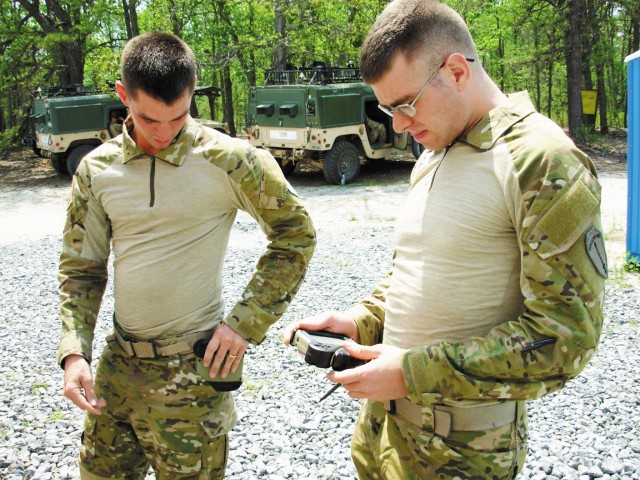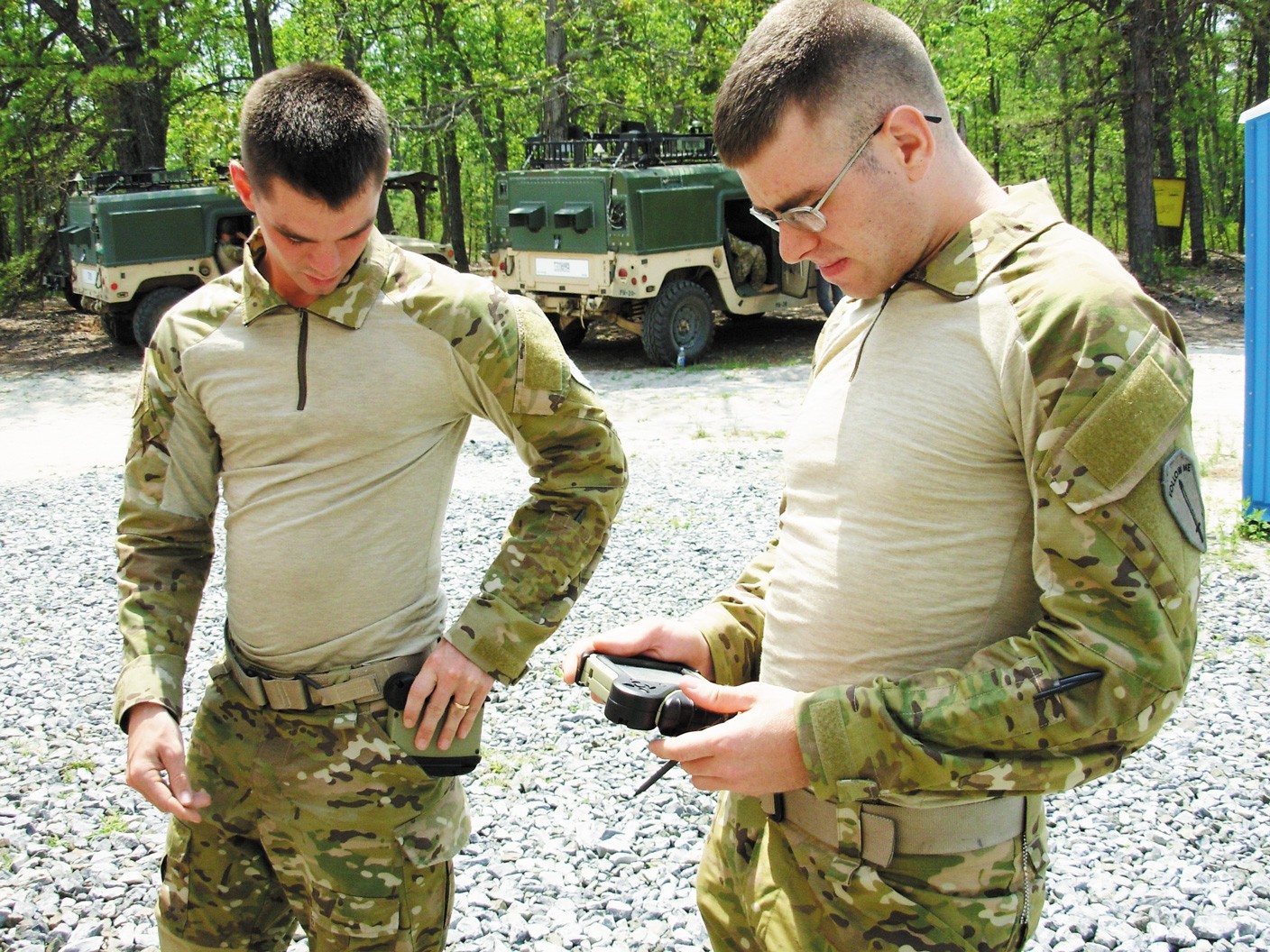The U.S. Army is in its fifth year of a 10-year partnership with Arizona State University, and reports on-time progress in its journey towards creating a flexible display screen for the dismounted Soldier.
The Army established the Flexible Display Center at Arizona State University to advance flexible display technology research and speed the commercialization of flexible display screens for use in Soldier equipment.
"This is a one-of-a kind center that provides unique and powerful technology development capabilities for the Army, ASU and industry partners," said Gregory Raupp, Flexible Display Center director.
The U.S. Army Research Laboratory, Natick Soldier Research Development and Engineering Center and the U.S. Army Communications-Electronics Research, Development and Engineering Center are working together to advance the technology and develop software and other applications for Soldier use once the flexible display screen has matured. All three organizations are subordinate elements of the U.S. Army Research, Development and Engineering Command, headquartered at Aberdeen Proving Ground.
Contributing to Future Combat Systems and Army Transformation, the Flexible Display Center aims to replace glass-based displays in existing equipment with a light-weight, rugged flexible display screen that uses less power. Through the development of flat panel, flexible display screens, the Army can help increase Soldier efficiency and reduce the amount of weight the dismounted Warfighter carries.
"Just changing the screen can significantly reduce the weight of a piece of equipment," Morton said. "For example, a seventeen-inch display may weigh thirty pounds in a military vehicle with fifteen pounds of metal mounting hardware. By replacing that glass screen with a plastic, rugged, flexible display, the weight of the display may be reduced to only five pounds with two pounds of mounting hardware," said Dr. David Morton, cooperative agreement manager for the center.
"Soldiers like the readability of the e-paper [electronic paper] flexible display screen," Raupp said. "In bright light the screen is easier to read and in dim lighting and darkness, it's readable with night vision goggles."
The Army is looking at reflective and emissions technology for the screens to be integrated in human portable applications, allowing the Soldier to see the screen without the use of backlighting, as to not give away a location of a Soldier while on a mission. By replacing the current liquid crystal glass-based display, the amount of battery power used drops by at least half, and the display is less likely to break while on a mission, according to Morton.
Presently, the industry is flooded with liquid crystal display and plasma screens, all of which are delicate and need to be ruggedized for military use. However, with the development of flexible reflective technology, Soldiers may be able to wear a bendable display device, or roll-up, or ultimately fold the display screen, thus increasing Soldier capabilities to carry and convey mission information.
"We have tapped into non-mainstream technology [reflective and emissive] to increase the benefits and capabilities of the Warfighter," Raupp said. "Reflective displays are ideally suited for the dismounted Soldier, while the emerging emissive technologies are well suited to vehicle and command-post applications."
These screens could be used in mission planning and rehearsal, land navigation and provide the Warfighter with the most up-to-date information just prior to departing for a mission.
Ideally, a Soldier will be able to connect the flexible screen to a computer database and download information necessary to complete the mission. Then the Soldier would disconnect and retain the information on the device, fold or roll it up and pack it away.
These screens could also be worn on the forearm of a military uniform for easy access while in the midst of battle.
"It's an enabling technology with many possibilities," Morton said. "The technology will open a variety of doors for Army use. Potentially, it could be incorporated into the new vehicle systems. Maps could be displayed on the ground in the middle of the field, on a grand scale in a briefing setting or be displayed outside of a vehicle."
During the development of the flexible screens, RDECOM organizations are working simultaneously on the software to support the technology. Presently, there are two demonstrations that show integration through the Future Force Warrior program to show applications of the flexible screens.
One example, with customer funding and management support coordinated by teams at NSRDEC, is a rugged and compact networked personal digital assistant which was developed for use by individual infantry rifleman squad members. The Soldier Flex PDA was demonstrated in the Army's Future Force Warrior Advanced Technology Demonstration at the 2007 Command, Control, Communications, Computers Intelligence, Surveillance and Reconnaissance, or C4ISR, "On-the Move" testbed.
"We want industry to see the applications," Morton said.
The key reason the Army got involved with this project is to encourage commercial companies to manufacture the flexible display screens for the Army to purchase and utilize.
CERDEC's C4ISR/mobility has identified the need for thin-profile displays to be integrated and expanded to military applications to increase information capability. Partners in industry who contribute to the research will allow them to advance or create a new product line for their company, while providing the Army with the technology they need for purchase.
The Army's partnership with academia bridges the gap between the Soldier, industry and research data.
Maj. Michael Baker, an active-duty student at ASU, is studying for his doctorate., in computer science and engineering. Baker deployed recently, and says his experience in the field contributes to his research as a scientist.
"An Army representative can serve as a liaison for what emerging technology is applicable in the field," Baker said. "When I was deployed with Fourth ID [Infantry Division] we had a problem with the glass breaking on our PDAs [personal digital assistant]."
Students like Baker can identify problems in the field and bring feedback from the field for the scientists and engineers to solve.
"Someone needs to be able to think strategically from the field concept to the science and technology developments of the Future Force," he said.




Social Sharing